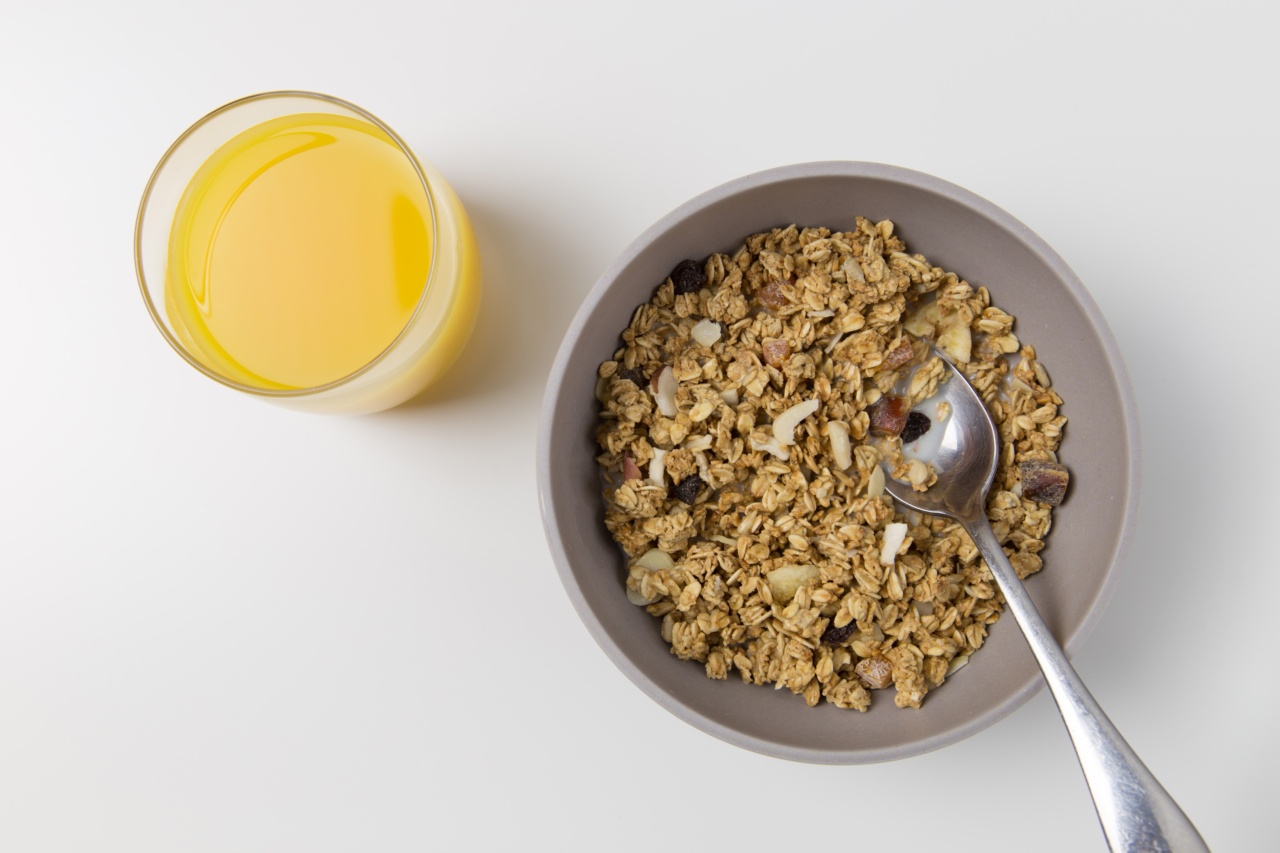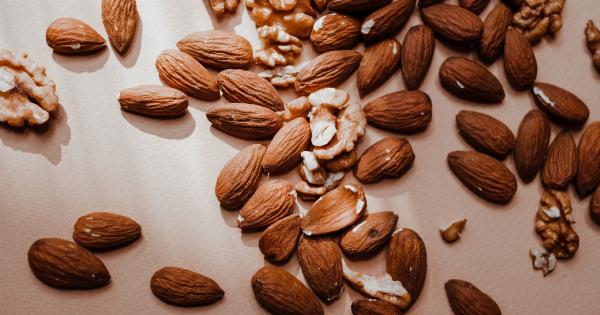Fiber is an essential part of a healthy diet that is often overlooked. While many people focus on getting enough protein, vitamins, and minerals, they may not realize the importance of including an adequate amount of fiber in their daily intake.
In this article, we will explore everything you need to know about fiber and its impact on your health.
What is Fiber?
Fiber is a type of carbohydrate that cannot be digested by the human body. Unlike other carbohydrates, such as sugars or starches, fiber passes through the digestive system relatively intact.
It is found in plant-based foods, including fruits, vegetables, whole grains, legumes, nuts, and seeds.
Soluble vs Insoluble Fiber
There are two types of fiber: soluble and insoluble. Soluble fiber dissolves in water and forms a gel-like substance in the digestive tract. It can help lower blood cholesterol levels, regulate blood sugar levels, and contribute to a feeling of fullness.
Good sources of soluble fiber include oats, barley, legumes, fruits, and vegetables.
Insoluble fiber, on the other hand, does not dissolve in water. It adds bulk to the stool, helps prevent constipation, and promotes regular bowel movements. Whole wheat, bran, nuts, and certain vegetables are rich in insoluble fiber.
Health Benefits of Fiber
Consuming an adequate amount of fiber has numerous health benefits:.
1. Weight Management
Fiber-rich foods are often less energy-dense, meaning they have fewer calories for the same volume compared to low-fiber foods. Additionally, high-fiber foods tend to be more filling and can help reduce overall food intake, aiding in weight management.
2. Digestive Health
Fiber plays a vital role in maintaining a healthy digestive system. It adds bulk to the stool, preventing constipation and promoting regular bowel movements.
Adequate fiber intake can also reduce the risk of developing hemorrhoids, diverticular disease, and other gastrointestinal disorders.
3. Heart Health
Research suggests that consuming soluble fiber can help lower LDL cholesterol levels, also known as “bad” cholesterol. By doing so, it reduces the risk of heart disease and stroke.
Including high-fiber foods in your diet, such as oats, legumes, and certain fruits, may contribute to a healthier heart.
4. Blood Sugar Control
For individuals with diabetes or those at risk of developing it, fiber can help regulate blood sugar levels. Soluble fiber delays the absorption of sugar and can improve blood glucose control.
Including whole grains, beans, and vegetables in your meals can aid in managing blood sugar levels.
5. Gut Health
Fiber acts as a prebiotic, providing nourishment for the beneficial bacteria in your gut. These bacteria help maintain a healthy gut microbiome, which is essential for proper digestion, immune function, and overall well-being.
Consuming a variety of fiber-rich foods can support a thriving gut environment.
How Much Fiber Do You Need?
The recommended daily fiber intake varies depending on age, gender, and specific health conditions. As a general guideline, the American Heart Association suggests a daily intake of 25 grams of fiber for women and 38 grams for men under 50 years old.
For those over 50, the recommendations are 21 grams for women and 30 grams for men.
It is important to note that these are general recommendations, and individual needs may vary. Consulting with a healthcare professional or registered dietitian can help determine the ideal fiber intake based on personal circumstances.
Tips for Increasing Fiber Intake
If you feel that you’re not getting enough fiber in your diet, here are some tips to increase your daily intake:.
1. Eat Whole Fruits and Vegetables
Include whole fruits and vegetables in your meals and snacks. They are not only rich in fiber but also provide essential vitamins, minerals, and antioxidants.
2. Choose Whole Grains
Opt for whole grain products such as whole wheat bread, brown rice, and whole grain pasta. These options contain more fiber and nutrients compared to their refined counterparts.
3. Incorporate Legumes
Legumes, including beans, lentils, and chickpeas, are excellent sources of both soluble and insoluble fiber. Add them to soups, salads, or make delicious dips and spreads.
4. Snack on Nuts and Seeds
Nuts and seeds are not only rich in healthy fats but also provide a good amount of fiber. They make for a satisfying snack or can be added to cereals, yogurt, or salads.
5. Read Food Labels
When shopping for packaged foods, check the nutrition labels for fiber content. Choose products that have a higher fiber content per serving.
6. Gradually Increase Intake
Increasing fiber intake too quickly can cause gastrointestinal discomfort, such as bloating or gas. It is best to gradually increase fiber intake over a few weeks while also ensuring adequate hydration.
Potential Side Effects of Too Much Fiber
While fiber is beneficial for most people, it is essential to be mindful of the potential side effects of excessive fiber intake:.
1. Bloating and Gas
Consuming an excessive amount of fiber, especially if your body is not accustomed to it, may cause bloating and gas. Increase your fiber intake gradually to allow your body to adjust.
2. Diarrhea or Constipation
If you suddenly increase your fiber intake without sufficient hydration, it may lead to constipation. On the other hand, excessive fiber without adequate fluids can result in loose stools or diarrhea. Maintaining proper hydration is key.
3. Nutrient Interference
High-fiber foods may interfere with the absorption of certain minerals, such as iron, zinc, and calcium.
While this is generally not a concern for individuals with a balanced diet, those with specific nutrient deficiencies may need to monitor their intake or consult a healthcare professional.
Conclusion
Fiber plays a crucial role in maintaining overall health and well-being.
Including a variety of fiber-rich foods in your daily diet can help with weight management, support digestive health, improve heart health, regulate blood sugar levels, and promote a thriving gut environment. By gradually increasing your fiber intake and staying hydrated, you can experience the many benefits of fiber without significant side effects.






























